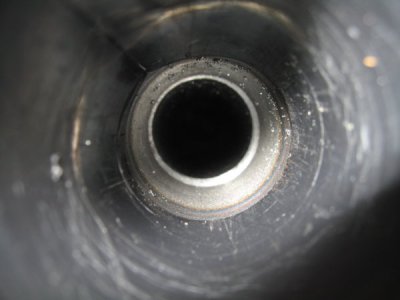- Joined
- Jan 20, 2016
- Messages
- 602
Thank you in advance for any help anyone can offer.
I have an X2 mill with a belt drive from LMS that I have been using for about a year now. Recently with my CNC conversion, I have been able to use the high end of the 4300 RPM range the belt drive has and that has directed me to some spindle problems. At high speeds, the entire head vibrates too much for comfort.
When looking closer, I found that the pulleys are both wobbly and the draw bar is not even close to running true. The inside of the spindle is only out about .0005" and with a collet and endmill tightened in, the tool is out .0015" directly below the collet. This is consistent across 3 different collets and several tools each. All are out almost exactly .0015" according to my indicator. You can also hear a sort of gritiness when the mill is running at low speeds that reminds me a little of the gears from before and not nearly as quiet as I remember it being when I first put the belt drive on. The spindle and head also get very hot at 4300. I tested when I first put the belt drive on and after 15 minutes, it was only slightly warm. Now it is activate burn reflex hot. After about 10 minutes.
Additionally, the spindle pulley isn't a sliding fit anymore. I specifically remember it being a darn near perfect fit when it was initially installed. The motor pulley can't be trued up with the key in, but it will run pretty true using only the set screw.
Last, when looking down through the spindle, you can see that something is way out. I have a video because its hard to explain but it is substantially more than .0005" out like the spindle itself. I took the whole belt drive assembly apart and cleaned it up and didn't find anything out of place in the spindle. What should I be looking for to solve these issues?
Here is a video of the assembly running at low speeds then higher speeds and I put the camera next to the head to try to capture the sound a little better.
Here is the wobble in the motor pulley.
Here is the view down the spindle. You can hear the rough grinding sound here.
Once again, I appreciate everyones help. This forum has been instrumental in my growth as a wannabe home machinist.
I have an X2 mill with a belt drive from LMS that I have been using for about a year now. Recently with my CNC conversion, I have been able to use the high end of the 4300 RPM range the belt drive has and that has directed me to some spindle problems. At high speeds, the entire head vibrates too much for comfort.
When looking closer, I found that the pulleys are both wobbly and the draw bar is not even close to running true. The inside of the spindle is only out about .0005" and with a collet and endmill tightened in, the tool is out .0015" directly below the collet. This is consistent across 3 different collets and several tools each. All are out almost exactly .0015" according to my indicator. You can also hear a sort of gritiness when the mill is running at low speeds that reminds me a little of the gears from before and not nearly as quiet as I remember it being when I first put the belt drive on. The spindle and head also get very hot at 4300. I tested when I first put the belt drive on and after 15 minutes, it was only slightly warm. Now it is activate burn reflex hot. After about 10 minutes.
Additionally, the spindle pulley isn't a sliding fit anymore. I specifically remember it being a darn near perfect fit when it was initially installed. The motor pulley can't be trued up with the key in, but it will run pretty true using only the set screw.
Last, when looking down through the spindle, you can see that something is way out. I have a video because its hard to explain but it is substantially more than .0005" out like the spindle itself. I took the whole belt drive assembly apart and cleaned it up and didn't find anything out of place in the spindle. What should I be looking for to solve these issues?
Here is a video of the assembly running at low speeds then higher speeds and I put the camera next to the head to try to capture the sound a little better.
Here is the wobble in the motor pulley.
Here is the view down the spindle. You can hear the rough grinding sound here.
Once again, I appreciate everyones help. This forum has been instrumental in my growth as a wannabe home machinist.


